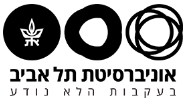סמינר במימון חשבונאות
Speaker: Ilan Guttman, NYU
Voluntary Disclosure and Investment Decision when private information about some investments is not disclosable
Joint work with Ilan Kremer (Hebrew University)and Elyashiv Wiedman (Hebrew University)
Extended Abstract
Firms often have to choose between mutually exclusive investment opportunities with different characteristics. One such investment characteristic pertains to firms’ ability to credibly disclose private information about the profitability of the investment opportunity. In particular, some
investment opportunity may be subject to high proprietary costs from disclosing information about them, where other investments are not subject to such costs. Alternatively, the private information about some investments may be easily verifiable by the capital market, where the
private information about other investments may be of a nature that is not easily verifiable, and hence its disclosure may not be credible. Firms’ investment and disclosure decisions are often intertwined. When making investment and disclosure decisions, firms typically care about both the short-term market beliefs (price) and the long-term intrinsic value. Our model studies how the ability of such firms to voluntarily disclose information about their chosen investment affects the efficiency of the project selection and the equilibrium disclosure strategy, when the firm needs to choose between a project that the private information about it can be disclosed and a project that for which it cannot be disclosed (or it is too costly to disclose).
Our baseline model assumes that a firm receives private information about the profitability of two mutually exclusive projects, A and B, and needs to choose one of the two. If project A is chosen, the firm’s private information about it can be credibly and costlessly disclosed. In contrast, if the firm chooses project B, it cannot credibly disclose the private information about the profitability of project B. We derive the unique equilibrium of the model, which is characterized by disclosure of the private information about project A, when project A is chosen, only when it is sufficiently favorable (a disclosure threshold). Due to the option value of disclosure of project A, the equilibrium entails inefficiency in the investment choice, since project A is sometimes chosen even when it has a lower expected value than project B. Our model demonstrates that when managers care more about the short-term price the expected efficiency loss is higher, the disclosure threshold is lower and the overall probability of disclosure is higher.
We extend the baseline model to study how changes in the ex-ante expected value of the two projects affect the expected efficiency loss and the disclosure threshold. We find that the efficiency loss exhibits an inverse U-shape as a function of the difference between the ex-ante
expected values of the two investments. We also consider a setting in which project B can sometime be disclosed as well, however, it is either costly, or a stochastic event


